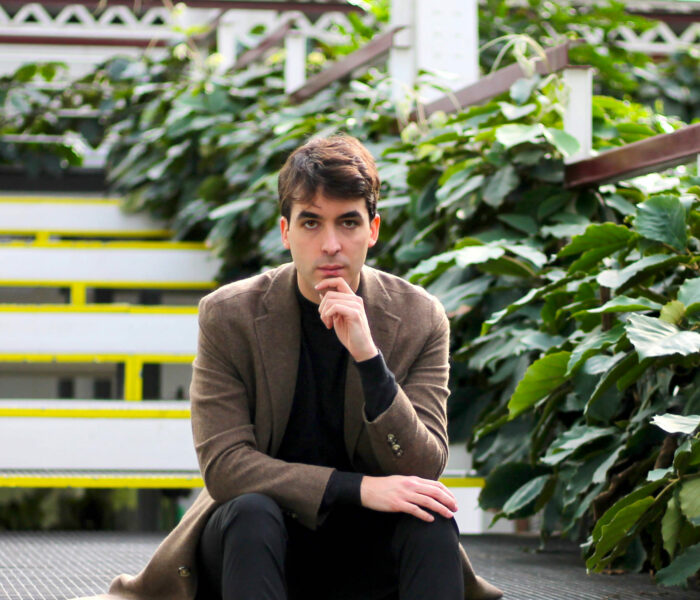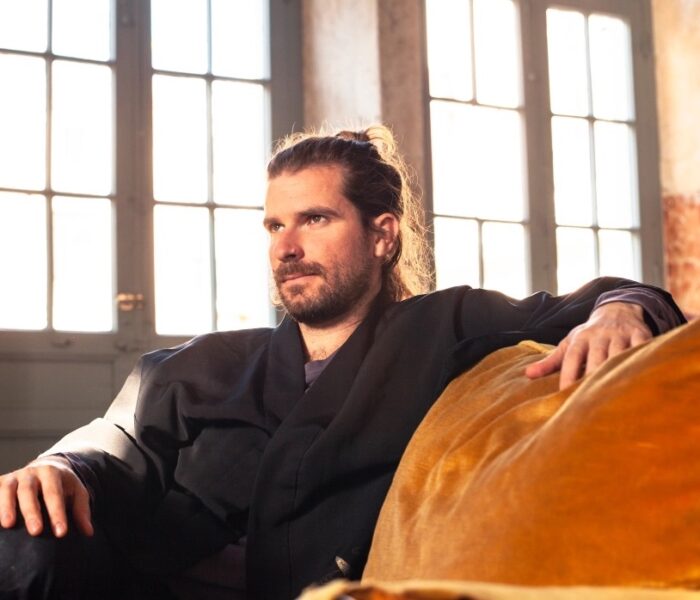Since her solo debut with 11 novembre (2012), Silvia Pérez Cruz has never ceased to offer us beauty and sensitivity, depth and heartbeat. Her indomitable creativity pushes her through different genres: flamenco, text songs, Iberian or Latin American folklore, jazz; showing with each new album more mastery and elegance, as if this acclaimed Spanish artist could extract the secret mineral from each genre she explores.
This was already the case with her second album Granada (2014), in collaboration with Raül Refree, with Domus (2016), which won her the Goya for best original song, and finally with Vestida de Nit (2017).
Then, three years later, comes Farsa (género imposible) (2020), a series of songs written in the light of other artistic disciplines, such as theater, film, dance, painting, photography and poetry.
And now, in midsummer, Silvia Pérez Cruz presents Toda una vida, un día (All life, one day - Sony Music 2023), a powerful, ambitious and energetic album, inspired by the pandemic, made on the other side of the world in the aroma of travel and touring; a work that will mark a decisive stage in Silvia Pérez Cruz's career because of the exquisite quality it exudes.
Toda una vida, un día consists of twenty-one songs structured into five movements: La Flor, La Inmensidad, Mi Jardín, El Peso and El Renacimiento. Reflections on life and death run through the whole album, whose fundamental axis is, from beginning to end, the idea of transformation. Thus, each movement corresponds to a stage of life, and each stage is expressed by a specific sound, composition and textures.
In the first movement - Childhood - the songs breathe light and goodness, transparency and lightness. The second - Youth - plunges into experimentation with autotune and synthesizers. The third - Maturity - alludes to that stage of rest, affection and complicity; that stage of life when heart and head seem to join hands to maintain balance and serenity. In this third movement, Silvia Pérez Cruz shares duets with musicians and performers such as Juan Quintero, Natalia Lafourcade, Liliana Herrero, Pepe Habichuela, Carmen Linares and Salvador Sobral. In the fourth movement - Old Age - the sonority is wrapped up in a more classical style, in the vibration and weight of the strings. Finally, the fifth movement - Renaissance - is characterized by the presence of the naked voice and the coherence of rhythm and percussion. After the turning point of old age (fourth movement), death does not appear, but a new beginning takes shape. Indeed, this circular conception inspires the entire work, as if our composer were offering us a complete circle (Un jour), from a greater circular totality (Toute une vie).
First of all, we're moved by the playfulness and warm words of tracks such as "Els dracs busquen l'abril et Planetes i orenetes" (Dragons seek April and Small planets and swallows, Mov.1). Touched by the softness of the strings that brush against the skin, and by the danceable vocal melody that evokes summer landscapes by the river, breathing in Mediterranean breath, freshness and perspiration.
In "Aterrados" (Terrorized), the first composition of movement 2, we are absorbed by the reverberation of the voices; like the superimposition of quilted textures on the tension of the winds in "El poeta es un fingidor" (The poet is an impostor), a text by the poet Fernando Pessoa. These are melodies trapped in the synthesizer, like reflections of the Portuguese poet's heteronyms.
Then, in "Salir distinto" (Come out transformed), the first song of movement 3, flamenco, strength and poetry burst forth; El Duende, as they say in the South. The play of palms, the Spanish guitar of the great Pepe Habichuela, this bewitchment, this tragedy, this root, as if García Lorca were dancing with Silvia Pérez Cruz at the heart of the album. The voices emerge from the rhythm, without interference, like a pure, transparent source.
Very different, too, is the composition that gives the album its title, Toda una vida, un día, (Movement 4), which alludes to old age, in a duet with the formidable Liliana Herrero, with her deep, grating voice; a track with religious overtones, almost a ceremony, a mass full of beauty and sober, restrained pain. An atonement perfumed with incense.
The final movement's lullaby "El teu nom" (Your name) is a voice of blue velvet, culminating in the rebirth of the piece that closes the disc: "Món" (World), a song like a primer, a crescendo of echoes and keyboards to bring the work full circle.
Toda una vida, un día attempts to recapture the rhythm of things, a music far from strident; a sound that seeks the intimate word of emotions, conversing in the warmth of the hearth one evening, improvised, with a glass of wine nearby; savoring serene sadness for what is no longer; but, rejoicing without euphoria for the hope of a promising new horizon. As the artist herself said in a recent interview: "I wanted to represent the beauty of all ages". It's only at the end of the album, as it draws to a close, that this restorative and healing emotion, so close to emptiness and nothingness, begins to ignite within us.
Txema Seglers
Photo © Alex Rodemakers



)



